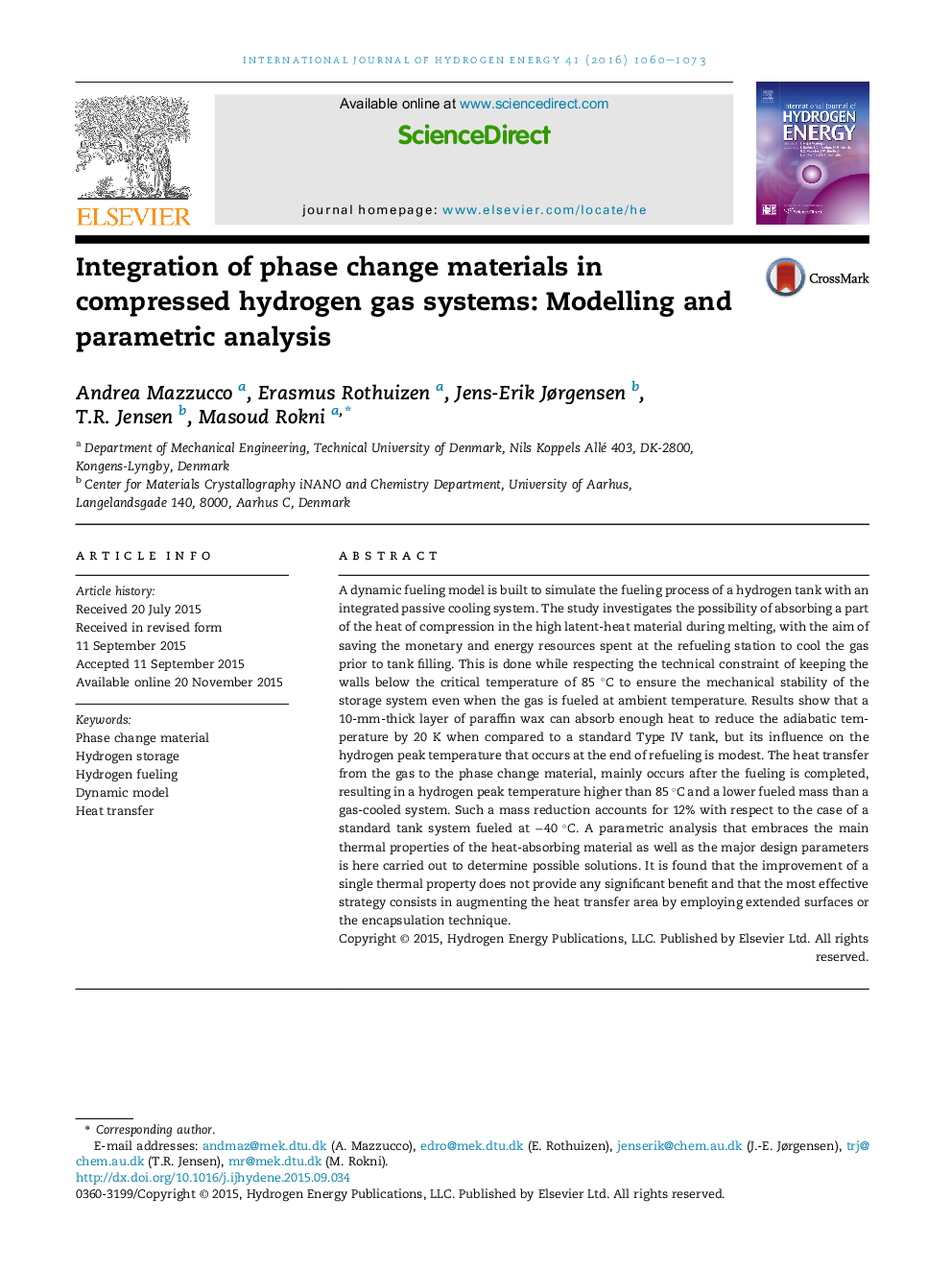| Article ID | Journal | Published Year | Pages | File Type |
|---|---|---|---|---|
| 7712702 | International Journal of Hydrogen Energy | 2016 | 14 Pages |
Abstract
A dynamic fueling model is built to simulate the fueling process of a hydrogen tank with an integrated passive cooling system. The study investigates the possibility of absorbing a part of the heat of compression in the high latent-heat material during melting, with the aim of saving the monetary and energy resources spent at the refueling station to cool the gas prior to tank filling. This is done while respecting the technical constraint of keeping the walls below the critical temperature of 85 °C to ensure the mechanical stability of the storage system even when the gas is fueled at ambient temperature. Results show that a 10-mm-thick layer of paraffin wax can absorb enough heat to reduce the adiabatic temperature by 20 K when compared to a standard Type IV tank, but its influence on the hydrogen peak temperature that occurs at the end of refueling is modest. The heat transfer from the gas to the phase change material, mainly occurs after the fueling is completed, resulting in a hydrogen peak temperature higher than 85 °C and a lower fueled mass than a gas-cooled system. Such a mass reduction accounts for 12% with respect to the case of a standard tank system fueled at â40 °C. A parametric analysis that embraces the main thermal properties of the heat-absorbing material as well as the major design parameters is here carried out to determine possible solutions. It is found that the improvement of a single thermal property does not provide any significant benefit and that the most effective strategy consists in augmenting the heat transfer area by employing extended surfaces or the encapsulation technique.
Related Topics
Physical Sciences and Engineering
Chemistry
Electrochemistry
Authors
Andrea Mazzucco, Erasmus Rothuizen, Jens-Erik Jørgensen, T.R. Jensen, Masoud Rokni,
